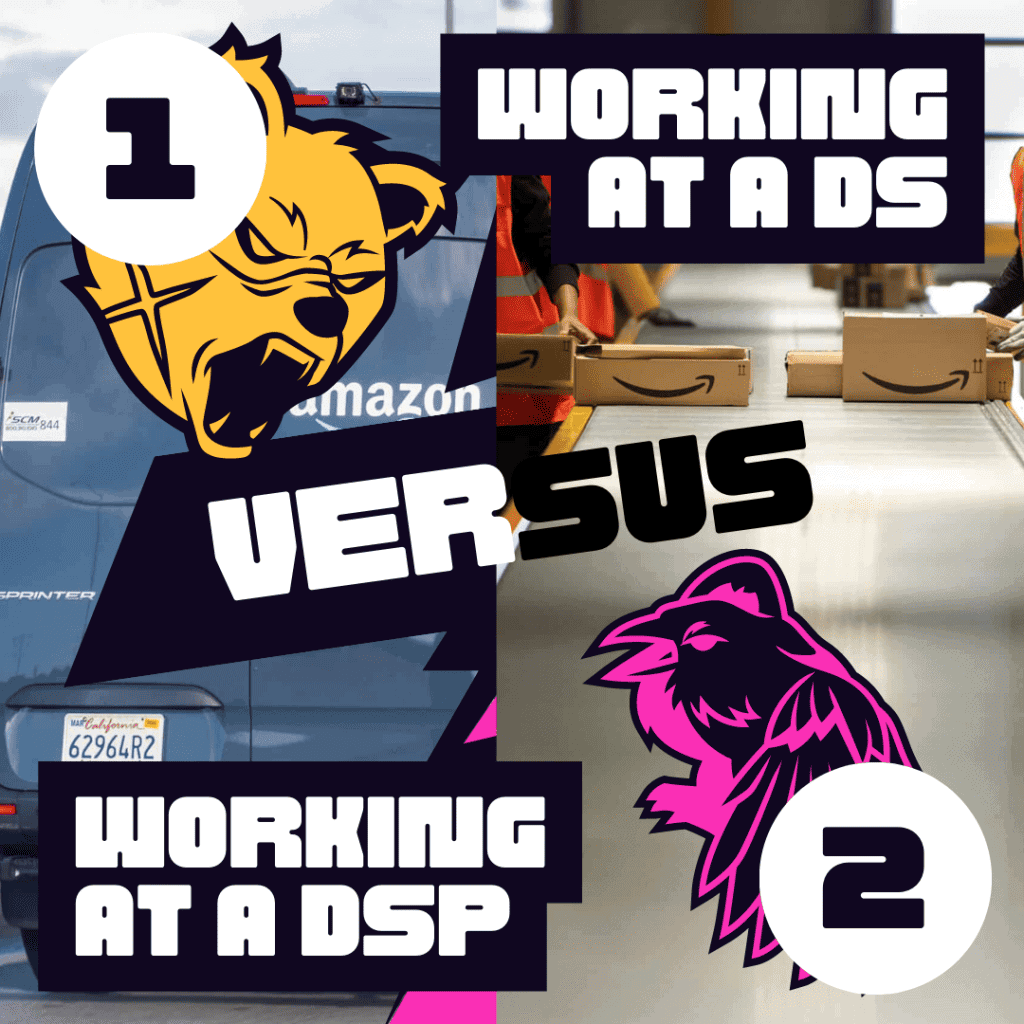
Amazon delivery stations are warehouse facilities that prepare shipment for last mile delivery. Each delivery station is served by one or more delivery service partners (DSPs).
DSPs are not owned by Amazon but are independently owned franchises that have a fleet of 20 to 40 minivans on average.
See: list of 2,319 Amazon DSPs across the USA and Canada.
If you’ve worked for either a DSP or delivery station, you might have wondered what it would be like being on the other side. This is because DSP drivers and Amazon delivery station associates cross paths frequently, for example, when loading vans.
Here is a list of differences between working for a DSP and delivery station as well as pros and cons of each option.
| Delivery station (DS) | Amazon DSP |
|---|---|
| Most shifts at a delivery station are overnight. | There are no overnight routes, which is preferable to most people. |
| Get all amazon benefits e.g. UPT, PTO, health insurance, 401(k), vacation and Career Choice Program. | Since DSPs are independently owned, benefits can be a hit or miss. In many cases, you end up paying a lot for healthcare even with DSP provided health insurance, for example. |
| Work the entire shift, usually 10 hours. FlexPT shifts are one exception. | Up to 10 hours of work but can leave early when it’s not busy. Get paid for 10 hours regardless of when you finish. |
| You don’t have to deal with customers. | Dealing with customers (who can sometimes act entitled) is part of the DSP driver’s job. You might also encounter aggressive dogs on some routes. |
| Can get repetitive and mind numbing. | You will be driving from place to place hence more mentally stimulating than at a DS. |
| Micromanagement, although not as bad as in fulfillment centers | You are left on your own while doing your routes |
| More job security than at a DSP | DSPs can have their contract abruptly canceled by Amazon |
| Clean and readily available bathrooms | DSP drivers have been known to pee in bottles as sometimes there are no available bathrooms in their routes. |
| The dress code at delivery stations is pretty lax | You have to wear your designated uniform |
| You are protected from the elements as you work inside the facility. | You will have to deal with snow, rain, heat, etc. as you deliver packages. |
| More opportunities for moving up the ladder. | DSPs are small/medium sized businesses so opportunities for getting promoted are pretty limited. |
| Pay is usually less than that of DSP drivers. | DSP drivers usually get paid more than their warehouse colleagues. |
Similarities between working at a DSP and a delivery station
It’s clear that there are differences between working at a DSP and a DS. However, there are a few ways in which both work environments are similar.
Both are labor intensive work environments. At delivery stations, associates load heavy bags and boxes onto delivery vans for many hours. At the same time, DSP drivers have to haul those same bags and boxes across streets and up apartment complexes which sometimes don’t have elevators. They both involve lots of walking. In a delivery station, associates walk five to ten miles a shift pushing carts from one corner of the warehouse to the other. It might not seem like it, but DSP drivers do a lot of walking as well. This is especially true if they have many deliveries in a single neighborhood or apartment complex. Both jobs have high turnover rates due to how demanding the job is. The average tenure of an employee at a DSP or a DS is not more than a few months.Having explored the similarities and differences, a follow up question might be: Can you work for both a delivery station and a DSP at the same time? Well, the answer is NO since Amazon does not allow employees to work for both due to conflict of interest issues. You have to resign when you transfer from a DSP to a DS or vice versa.